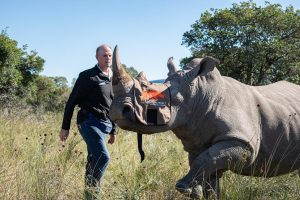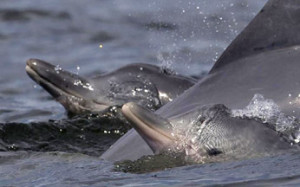The death of Scarface, a famous Yellowstone bear, has inflamed a fight over protections.
The grizzly bear known as Scarface roams Yellowstone National Park in July. He was fatally shot in November.
Last week the Montana Department of Fish, Wildlife & Parks announced that a grizzly bear died of a gunshot wound last November just outside Yellowstone National Park.
This wasn’t any old bear. Although his official name was No. 211, people called him Scarface. That’s because he had a damaged ear and scars on the right side of his face, likely the result of scuffles with other male grizzlies over females and deer carcasses.
His recognizable appearance and tendency to roam within view of roads caught the attention of tourists and wildlife fans alike, who took to social media this week to mourn the animal’s death.
Scientists also knew the bear well. He managed to get captured and released 17 times, according to the Associated Press. But during his last capture his health was clearly deteriorating. He weighed in at 340 pounds, only slightly more than half of the 600 pounds he registered in his prime. Considered old at 25 (only 5 percent of grizzlies make it to that age), many thought he’d die of natural causes.
But it was a bullet that felled him, and it’s unclear where it came from. Grizzly bears are protected under the Endangered Species Act, so the U.S. Fish and Wildlife Service is investigating the killing. A spokesman for the agency declined to comment because the investigation into Scarface’s death is still active.
When Grizzlies Get Killed
There are 700 grizzly bears in Yellowstone. As of now, there are only two reasons you’re allowed to shoot them in the region. (Hunting grizzly bears in Alaska is currently allowed because grizzlies there aren’t listed under the act.) The first is if the grizzly is threatening your life. The second is if the grizzly is threatening your livestock—you can ask the government to come in and shoot it for you.
Mistaken identity is another way someone might get away with killing a grizzly, said Bonnie Rice of the Greater Yellowstone Sierra Club. A hunter may accidentally shoot a grizzly thinking it’s a black bear, which is legal to hunt.
The U.S. Fish and Wildlife Service determines every few years how many grizzlies can be killed for coming into conflict with cattle and sheep. These conflicts often occur on public land in grizzly territory that the U.S. government has leased to ranchers.
Environmental groups have sued the government for setting the quotas too high. But a controversial proposal issued in March to remove federal protections for the Yellowstone-area grizzlies altogether means they could once again be targeted by trophy hunters. It was sport hunting that nearly wiped out grizzlies by the 1970s, when their numbers had dropped to fewer than 150.
Since 1975, when they were listed as threatened, they’ve made a comeback. The nation’s grizzly bear recovery coordinator, Chris Servheen, was so pleased with the progress that he recently announced his readiness to retire, after 35 years on the job. (Related: What’s Next for Yellowstone’s Grizzlies?)
Activists worry that removing federal protection from the Yellowstone-area grizzlies could put them in jeopardy again. They’re already under pressure as their preferred food source, whitebark pine, is under threat from outbreaks of voracious bark beetles—more common now because of warmer temperatures. Add hunting to the mix, along with bears’ slow rate of reproduction, and their future is at risk if they’re delisted, says the Sierra Club, which has been active in fighting the delisting.
At least 61 grizzly bears died in the Yellowstone region in 2015, with causes ranging from natural death to self-defense to roadkill to “removal” due to livestock conflicts, according to the U.S. Geological Survey’s grizzly bear mortality database. Investigations are open on 17 of those, reports national-geographic.




